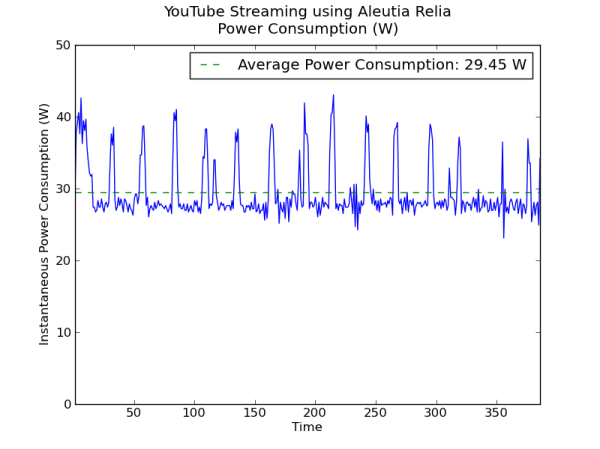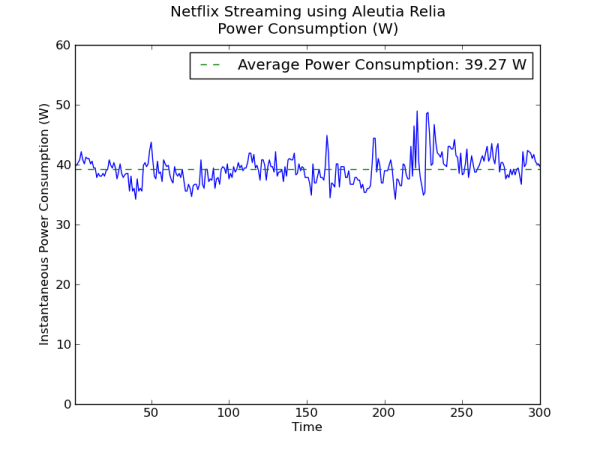Aleutia Relia Industrial PC Review: Ivy Bridge & Q77 in a Fanless Chassis
by Ganesh T S on December 4, 2012 10:00 AM EST- Posted in
- Industrial PC
- HTPC
- Ivy Bridge
- Aleutia
HTPC Aspects:
In this review, we will not go into the detailed decoding and rendering benchmarks. Instead, we will take a look at the power consumption profile while playing back 1080p YouTube videos and HD Netflix streams (720p at 3.6 Mbps). The test streams are the same as the ones we used in earlier HTPC reviews.
We briefly tried to check whether the Q77 chipset also exhibited the 23 Hz issue (given that the display output is driven by the chipset and not the CPU itself, and we have only tested H77 boards for HTPC purposes before). There is no change from what we experienced earlier: 23 Hz setting gives us 23.972 Hz instead of 23.976 Hz.
Personally, this hasn't caused me lot of trouble in my media center setup, but I would definitely point this out to anyone particular about this aspect and considering the Aleutia Relia for HTPC duties. Before proceeding to the next section, it is interesting to note that the availability of the Display Port output gives the unit the ability to drive 2560 x 1600 displays also.













47 Comments
View All Comments
Guspaz - Tuesday, December 4, 2012 - link
The only thing that makes it an "industrial PC" is that it's fanless. But there's no real difference from just taking any off-the-shelf fanless mini ITX case and slapping the "industrial" label on it. Adding a word to the name doesn't justify the massive markup.This isn't an Apple product, they can't justify that kind of premium.
Minion4Hire - Wednesday, December 5, 2012 - link
What fanless off-the-shelf mITX chassis includes VESA mounts and this small of a form factor? You can't buy this chassis from Streacom, and I certainly don't know of any other cases in this form factor that handle this level of hardware.This is most definitely a premium on industrial products. It might only be because it's a niche product that not a lot of people may require (relative to typical desktops, laptops, and other typical end-user devices) but it's more than justifiable. This is not for the average consumer.
Guspaz - Wednesday, December 5, 2012 - link
A bit of quick googling turned up Asaka's Euler, which does exactly this (IvyBridge Q77) at up to 35w. I really doubt there isn't any similar case that doesn't take that up to 45w, considering the Euler is much smaller than the Relia reviewed here, and as such simply has less surface area for cooling.Regardless, what you seem to be saying is that the slightly custom chassis is the only reason this device can justify a price 50%+ higher than already inflated retail pricing?
hobbesmaster - Monday, December 10, 2012 - link
I deploy stuff to industrial environments, this thing isn't even IP54 let alone IP 65 or 67 so its not exactly useful for me at least.twtech - Tuesday, December 4, 2012 - link
This product is not intended for HTPC use. I believe it was tested the way for the sake of having some reference point in performance analysis, because Anandtech is not a site specialized to industrial uses.Maybe you have never been in an industrial environment and so you don't know what that means. They tend to be very dusty. Active cooling will draw that dust into the system and it will collect there very quickly. Even if you have good fan filtering, that just means the filters will get clogged up very quickly.
That's why they went with passive cooling here and a more rugged chassis. That's also why it costs more.
mrdude - Tuesday, December 4, 2012 - link
Ah, my mistake.The review doesn't state its purpose until the final page, and even then that doesn't really explain why it's utilizing the weak WiFi and lack of Bluetooth, allowing the device to be neatly tucked away with a peripheral M+KB and display away from the unit.
I still don't get why they've gutted it of some features. If you don't need WiFi, then there's really no point in offering it. If you do then why opt with such a weak card?
QChronoD - Tuesday, December 4, 2012 - link
It says right in the title that its an Industrial Fanless PC. And I really doubt that if the was really going to be installed in some factory or what-not, that the company would be very enthusiastic about using all wireless peripherals. That's just a complication that they don't want to have to worry about (dead batteries/unpaired devices). Chances are they would be more than willing to run an ethernet cable to the location if there isn't already one.Personally, if I was buying this for a company, I'd option it with the lowest CPU, just the SSD, and not even bother with wireless. It sounds like the faster CPUs can't even run full speed for more than a few minutes. I would love to see Anandtech swap out the CPU for a much cooler i3 and run both configurations with a long test in the temperature chamber. If the i3 can run cool enough to not throttle, it could end up being faster than the i7.
FATCamaro - Tuesday, December 4, 2012 - link
Why buy this joke of a system over a mac miniA5 - Wednesday, December 5, 2012 - link
Completely different market. Did you read any of the other comments?ganeshts - Tuesday, December 4, 2012 - link
The chassis is custom made. There is a premium for fanless systems